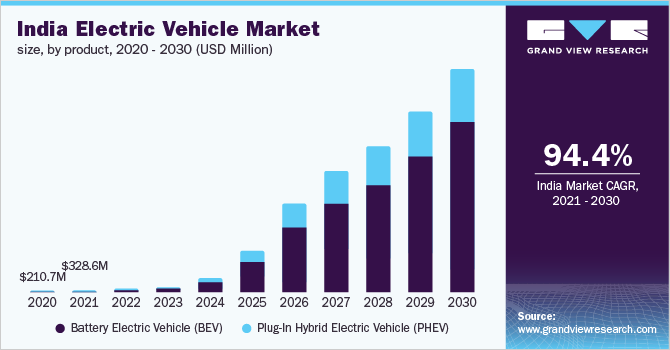Charging Ahead: How Next-Gen Batteries are Powering the Electric Vehicle Revolution
Revolutionizing the Road: The Unseen Powerhouse of Electric Vehicles
Imagine a world where your car glides silently down the highway, no fumes, no roar of an engine – just a smooth, powerful ride. At the heart of this vision lies an unsung hero, often hidden beneath sleek exteriors and silent engines: the battery. This is not just a component of the electric vehicle revolution; it’s the very lifeblood that powers it. This powerhouse not only defines the very heart of an EV but also stands at the forefront of automotive innovation. As we witness a radical shift from roaring engines to silent electric motors, it's the advancements in battery technology that fuel this exciting journey. Let's dive into the electrifying world of EV batteries, uncovering how they are driving us towards a more sustainable and efficient future on the roads.
In this blog we will discuss about the following points:
- Current State of Battery Technology
- Challenges and Limitations
- Innovations and Advancements
- Impact on EV Market and Consumer Adoption
- Future Outlook
Embarking on an electrifying journey through time, we see the evolution of battery technology as the driving force behind electric vehicles (EVs). From the humble beginnings with lead-acid batteries, marked by their reliability but hampered by bulkiness and low energy yield, to the advent of nickel-metal hydride batteries, offering a leap in lifespan and energy density, yet still falling short for modern demands. Then emerges the champion of the current era: lithium-ion batteries. These powerhouses, akin to the beating heart in our smartphones, revolutionize the EV world with their exceptional energy-to-weight ratio, propelling cars further while keeping them lighter.
But this technological marvel is not without its challenges. The quest for greater range, faster charging times, and sustainable manufacturing processes continues. The future gleams with promise, heralded by breakthroughs like solid-state batteries—envisioned to be the key to unlocking new realms of efficiency and sustainability. These innovations are not just incremental upgrades; they're transformative shifts that promise to redefine the very essence of electric mobility. Below is the timeline battery has evolved in the past centuries.
We do speak about EVs in our current living and predict it to be the future based on successful businesses like Tesla. However, in certain markets and regions it still stays as a dream to become true. Example India, where due to its current infrastructure and market conditions EVs have slight penetration and got some-to-few impressions (Companies like - Tata, MG, Mercedes Benz, BMW, Ather, OLA Scooter). It's evident that in India, being the tropical region where the median temperature and high humidity at distinctive parts of the nation, brings some of the noted challenges. They are as follows:
- Limited Range: EVs often face range limitations compared to ICE vehicles, causing range anxiety among users.
- Long Charging Times: Charging an EV can take significantly longer than refueling a traditional vehicle.
- Battery Degradation: Over time, batteries can degrade, reducing the vehicle's range and efficiency.
- Environmental Impact: The mining and manufacturing processes for batteries can have significant environmental effects.
- High Cost: High production costs of batteries contribute to the overall cost of EVs.
- Resource Dependency: Reliance on rare materials like lithium and cobalt raises sustainability and ethical concerns.
- Temperature Sensitivity: Battery performance can be affected by extreme temperatures, impacting range and efficiency.
- Solid-State Batteries: Offering higher energy density and improved safety, solid-state batteries are seen as the next big step in EV technology.
- Fast Charging Technology: Developments in charging technology aim to reduce charging times dramatically, making EVs more convenient.
- Improved Energy Density: Efforts are ongoing to increase the energy density of batteries, allowing for longer ranges without increasing size or weight.
- Eco-Friendly Materials: Research is focused on reducing reliance on rare earth elements and developing more sustainable battery components.
- Battery Recycling and Second Life Uses: Advancements in recycling processes and the utilization of used EV batteries in stationary storage applications are emerging trends.
In conclusion, the pulse of the electric vehicle revolution beats within the cells of its batteries. As we stand on the brink of this transformative era, one question remains: how will these advancements shape your daily commute or long-awaited road trips? The future is not just electric; it's exhilaratingly so. What part will you play in this green revolution? As we traverse this exciting era of automotive transformation, it's clear that battery technology is not just an aspect of electric vehicles; it's the catalyst driving us towards a greener, more efficient future. With each breakthrough, we edge closer to a world where electric mobility is the norm, guided by the relentless pursuit of innovation in battery technology.



%20vehicles%20to%20Electric%20Vehicles%20(EV).%20The%20.png)
Comments
Post a Comment